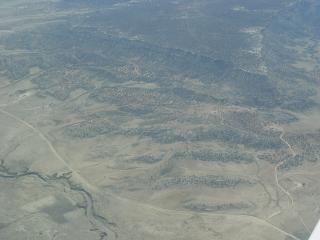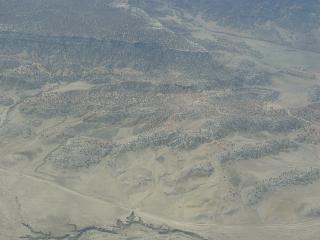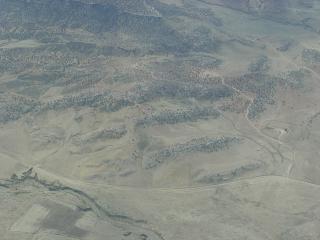Conor Watkins And
J. David Rogers
Colorado Plateau Research
Black Mesa, AZ Landsliding
Black
Mesa is a high, coal rich plateau in northern Arizona ringed by Toreva
block style landslides. The mesa consists of Mancos Shale capped
by the resistent Mesaverde Sandstone. These formations are the
same as those present at the Hopi Mesas, the type locality for the
Toreva block. This type of landslide, also known as a rotational
slump block, was noted by Parry Reich in his 1937 Journal of Geology
article titled The
Toreva Block, a distinctive landslide type. Reiche
mentions the presence of similar slides at Black Mesa and elsewhere.
As with the Toreva blocks surrounding the Hopi Mesas, those
near Black Mesa failed in the weak Mancos Formation. Black Mesa was
viewed from the air during a research trip in August 2004. These
landslides appear quite old and dissected but this appearance may
be caused in part by increased precipitation at the higher elevation
of the plateau, which acts to erode the landscape.
Questions or comments
on this page? |


